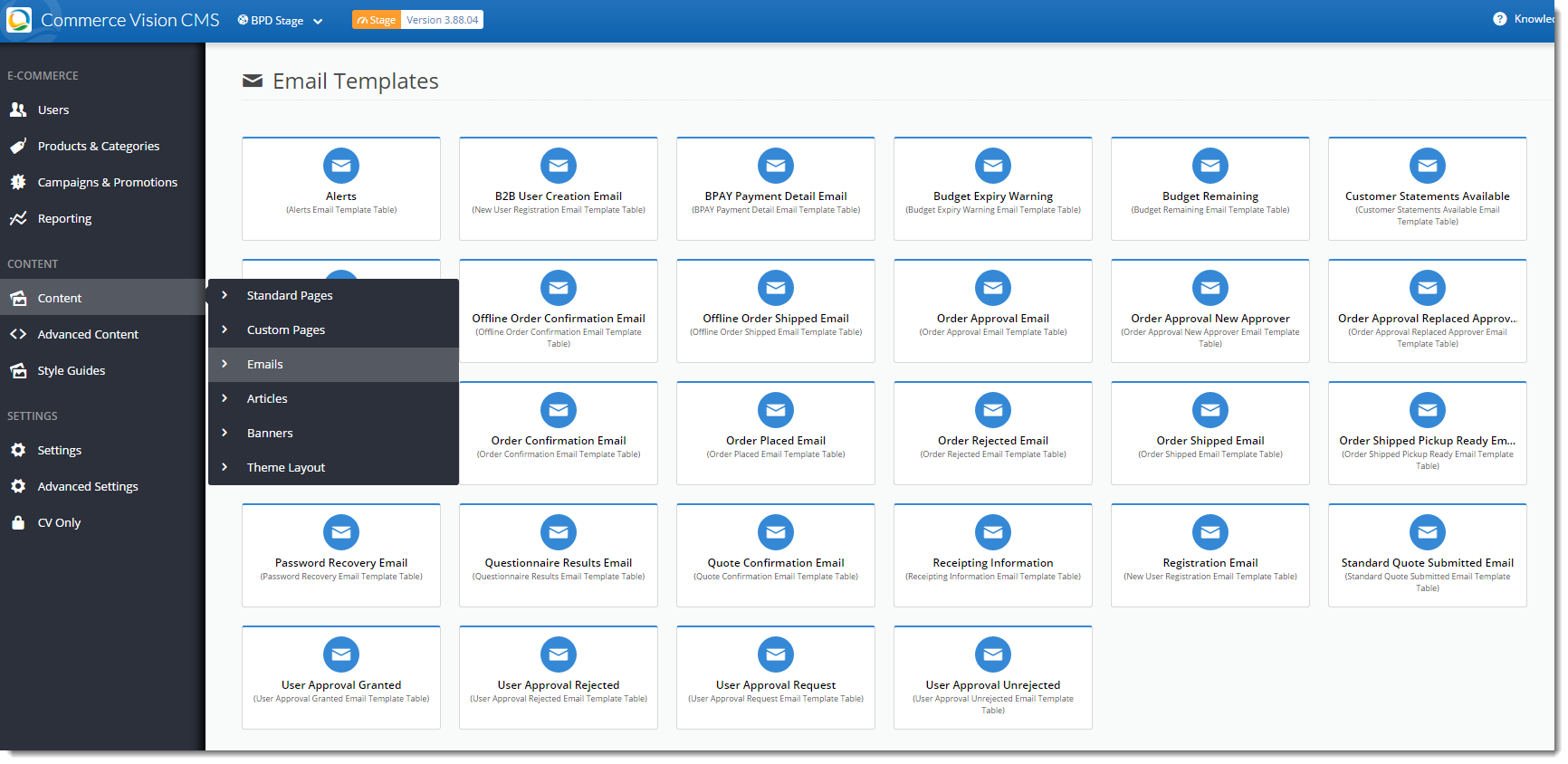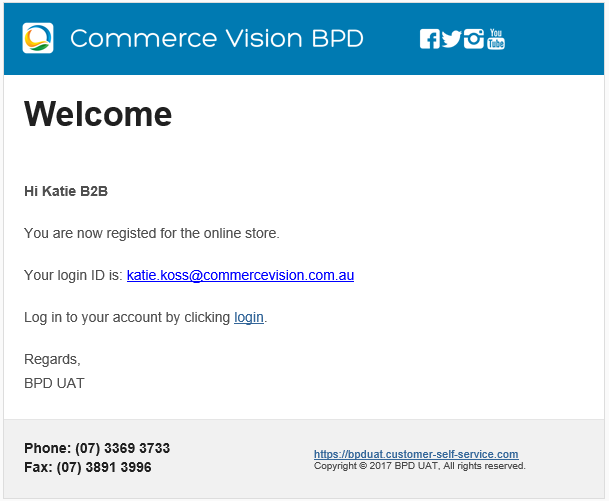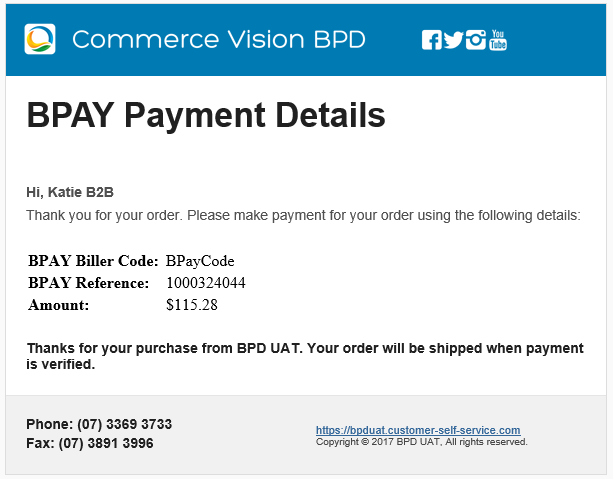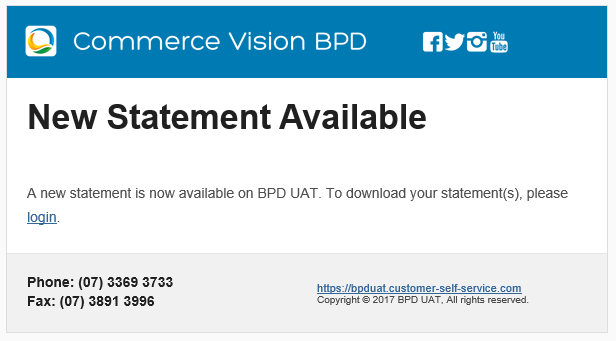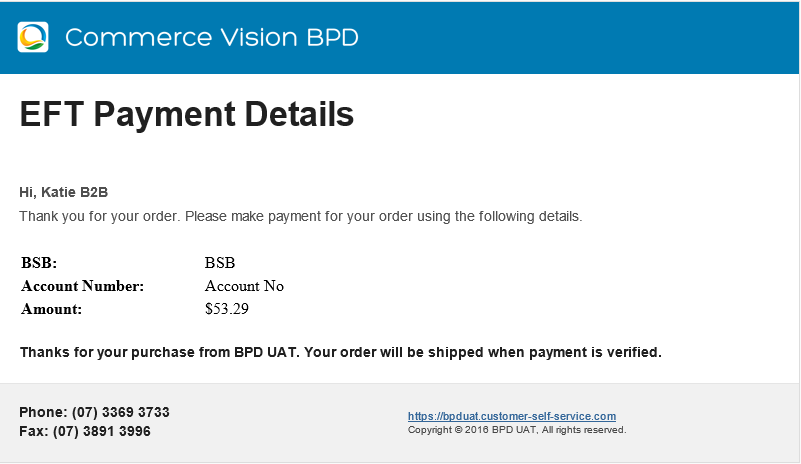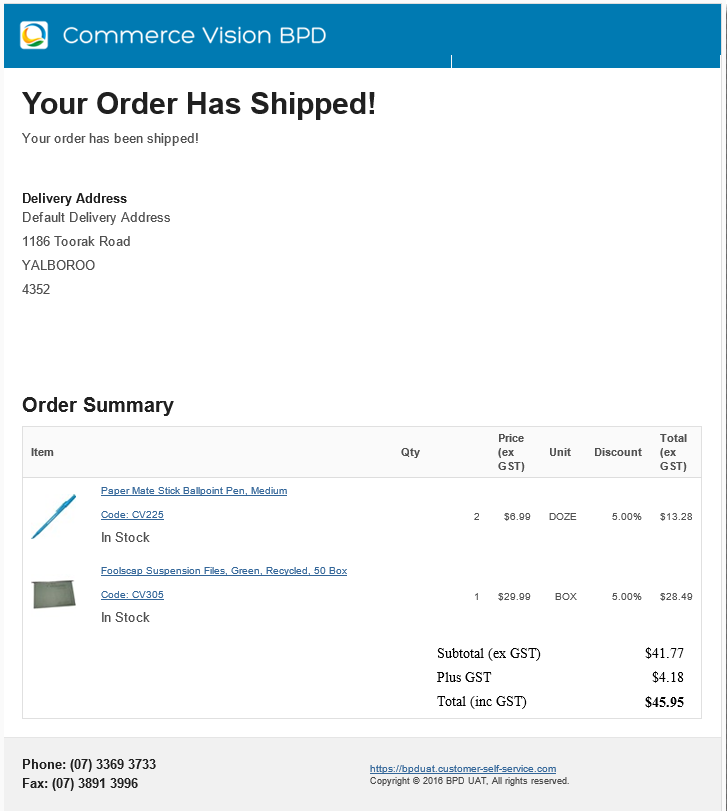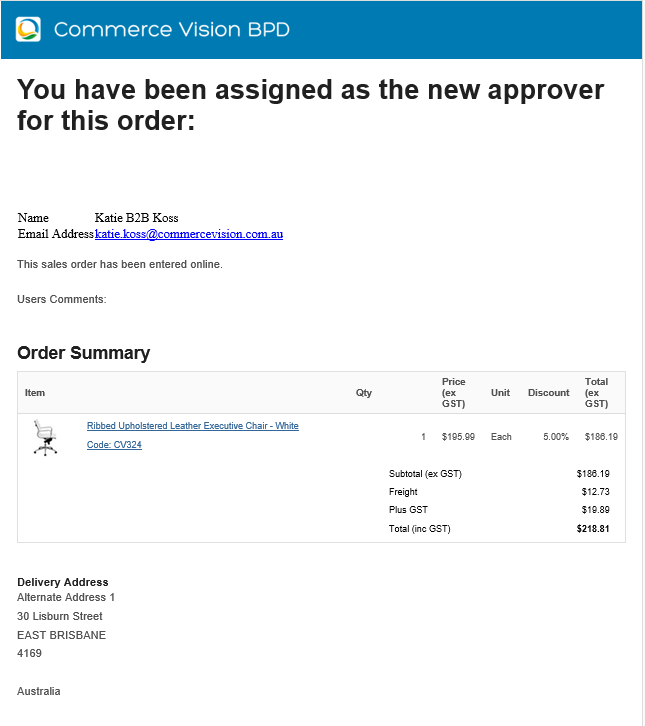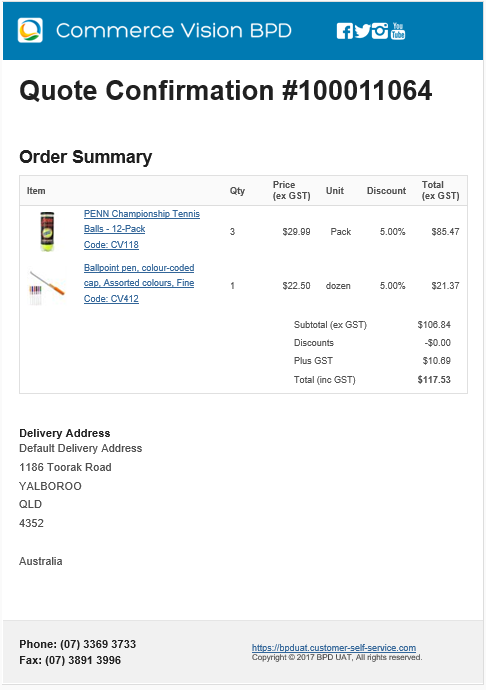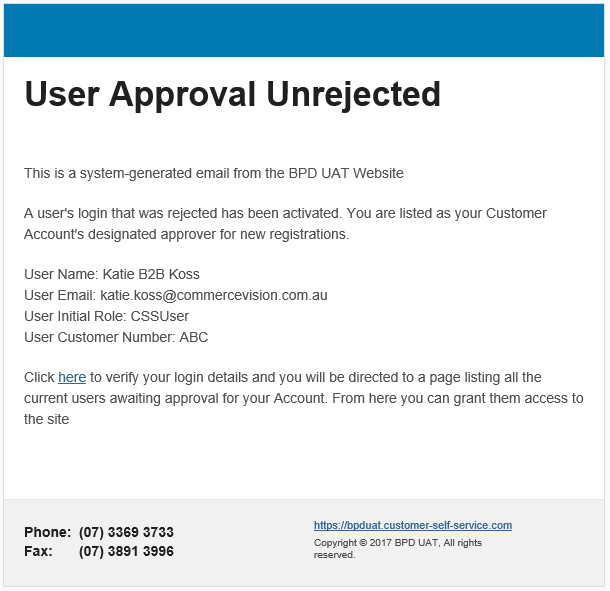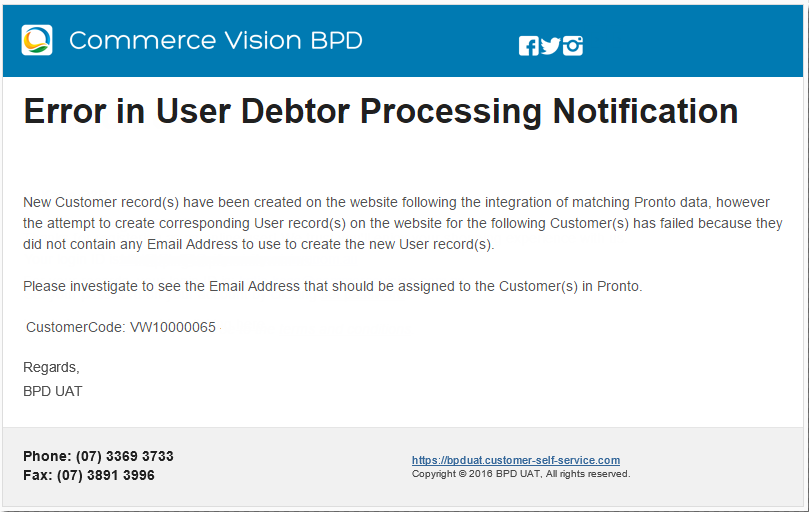Overview
On implementation of a Best Practice Design (BPD) website, several email templates are configured for use 'out of the box'. These include:
- Order Confirmation
- Order Shipped
- Password Recovery
- New User Registration
These email templates are easily maintained within the Content Management System (CMS) by a site Administrator. This article outlines the steps required to edit existing email templates.
A full list of email templates is presented for reference at the end of this article. Note that some templates may not appear in your CMS if the associated feature is not in use.
Step-by-step guide
- Login to the CMS.
- Navigate to 'Content' --> 'Emails'.
- Click the icon for the required template (e.g. 'Registration Email')
- The widget list will be displayed and organised by zone (e.g. Header, Header Left, Content, Footer).
- Locate the required widget and click the 'Edit' button.
- A 'Widget Configuration' modal window will appear. The configuration options will vary depending on the widget type.
- Edit the fields as required (in this example we'll edit the 'User Registration' widget, which forms the main body content of the email.):
- Description - A reference for the Administrator, the description appears on the widget list page and can signify the content of the widget.
- Layer - N/A for email templates. Leave as 'All Pages'.
- Include Surname - The template contains the greeting "Hi <FirstName>" by default. To include the user's surname in the greeting, tick this box.
- Registered Message - The main content area. Edit and format text as required. Insert images, links, and lists. To view and edit the html, click the '</>' icon.
TIP: Use '{0}' as a placeholder for where the user's Login ID should appear in the message. (Note that the {0} placeholder will trigger different content or data to appear, depending on the context of the field it's used in. Another example of this is below, in the 'Login Message' field.)- Login Message - A line of text can be inserted at the end of the email prompting the user to login to the website. In this field, a link to the login page is represented by '{0}'. Example: Click {0} to login now!
- Login Link Text - The word or words to replace '{0}' in the Login Message field.
- Click the 'Save' button to save changes.
The end result would look something like this:
BPD Email Templates
| Template Name | Use | Audience | Sample |
|---|---|---|---|
| Alerts | Sent to the user when they have new alerts associated with their account. | B2B | |
| APR Approval Required | Sent to the site Administrator when a user registers via B2B Registration and needs to have their login approved. | Internal | |
| APR Submitted | Sent to the user after they have submitted the B2B registration form. This email acknowledges their registration and advises that their login is awaiting approval by an administrator. | B2B | |
| APR User Notification | Sent to the newly approved user once their B2B Registration is complete. This email advises that their account has been approved and is active, and confirms their user name. | B2B | |
| B2B User Creation | The new user registration email sent to B2B users who are created by a site administrator (rather than registering themselves online). | B2B | |
| BPAY Payment Detail | Provides BPAY details (Biller Code, Reference, order total) so the user can pay for their recently submitted order. | B2B & B2C | |
| Budget Expiry Warning | Sent to the user when the expiry date for their budget is near. This email contains details such as account code, budget amount, remaining amount, and expiry date. | B2B | |
Budget Remaining | Sent to the user to advise the amount remaining in their budget for the current period. This email contains details such as account code, budget amount, and remaining amount. | B2B | |
| Customer Statements Available | Advises that a new Customer Statement is available to view. Includes company name and login link. | B2B | |
| EFT Payment Detail | Provides EFT payment details so the user can pay for their recently submitted order. | B2B & B2C | |
| Offline Order Confirmation | The order confirmation email sent for offline orders (i.e. not originating from the website, but keyed directly into the ERP). For use with Offline Order Emails. | B2B | |
| Offline Order Shipped | The order shipped email sent for offline orders (i.e. not originating from the website, but keyed directly into the ERP). For use with Offline Order Emails. | B2B | |
| Order Approval Email | Sent to the Approver to advise that an outstanding order requires their approval. Depending on site configuration, the email will either contain the Approve & Reject buttons, or a link to the website with a prompt to login and action the order. | B2B | |
| Order Approval New Approver | Sent to the newly selected Approver for an order that is still on 'Awaiting Approval' status. | B2B | |
| Order Approval No Longer Required | B2B | ||
| Order Approval Replaced Approver | Sent to the original Approver to advise that the user has selected a new Approver for an order that is still on 'Awaiting Approval' status. | B2B | |
| Order Approved | Sent to the user to advise that their order has been approved. | B2B | |
| Order Approver Proxy Approved | Sent to the user to advise that their order has been approved by a Proxy. | B2B | |
| Order Confirmation | Sent to the user to confirm that their order has been received by the system. | B2B | |
| Order Placed | Sent to the Customer Service team or other admin when a customer places an order online. | Internal | |
| Order Received | This email is in addition to the standard Order Confirmation email, and is sent as a reassurance that the order has been sent from the website successfully. | ||
| Order Rejected | Sent to the user to advise that the Approver has rejected their order. | B2B | |
| Order Shipped | Sent to the user to advise that their online order has been dispatched. | B2B & B2C | |
| Order Shipped Pickup Ready | Sent to the user to advise that their online pickup order is ready to be collected from the store location. | B2B & B2C | |
| Password Recovery | The 'forgot password' email sent to the user, containing the password reset message and link. | B2B & B2C | |
| Questionnaire Results | The response to a web form (e.g. 'Contact Us'), sent to the site Administrator (or other internal recipient). | Internal | |
| Quote Confirmation | Sent to the user who requests a quote at checkout. This email follows the format of the Order Confirmation email, but inserts the word 'quote' and uses the web quote number for reference. | B2B | |
| Receipting Information | |||
| Standard Quote Submitted | Sent to your Customer Service team, sales rep, or other admin when a customer requests a quote on their shopping cart contents. | Internal | |
| User Approval Granted | This email is triggered when a new B2B user is approved for web access. | B2B | |
| User Approval Rejected | Sent to the rejected user when their web access request has been denied. This email includes the name and email address of the approving / rejecting user administrator. | B2B | |
| User Approval Request | Sent to the designated B2B User Admin when a new user requests web access. This email includes details of the new user and directs the administrator to login and approve or reject. | B2B | |
| User Approval Unrejected | Sent to the designated B2B User Admin when a previously rejected B2B user is granted web access. This email includes details of the new user and directs the administrator to login and update access levels if required. | B2B | |
| User Exists | Sent to an existing user to advise that they already have an online account. Includes the user's user name. For use with User Debtor Integration. | B2C (occasionally B2B) | |
| User For Customer Registration | Sent to the new user after they have made a purchase in store and, as a result, been registered for a web account. For use with User Debtor Integration. | B2C (occasionally B2B) | |
| User For Customer Warnings | Sent to the Customer Service team or other admin when there is a conflict or duplication beween the ERP and the web re: users or accounts. For use with User Debtor Integration.
| Internal |
Related articles
